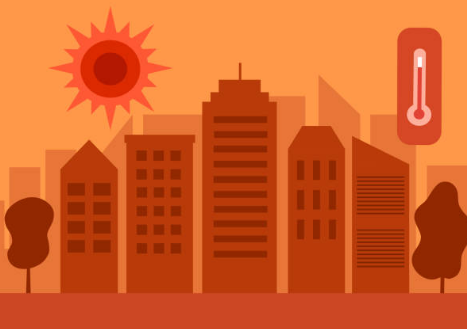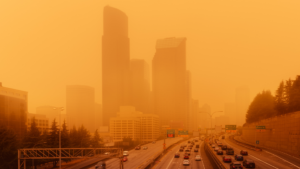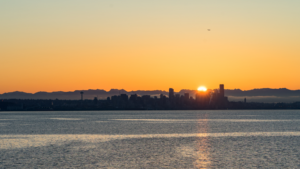The July heat wave, with several days above 90 degrees, was record-breaking but our partners were up for the challenge and successfully served many of our unhoused neighbors during this severe weather crisis.
Recognizing that extreme weather events may happen with increasing frequency, we are dedicated to implementing a response protocol that centers people experiencing homelessness in a way that meets people’s needs where they are.
In Preparation
Emergency management requires preparation as well as flexibility to respond in real time. A month ahead of the heat wave, we began conversations with partners and stakeholders including: Healthcare for the Homeless Network, Seattle’s Human Services Department, Seattle’s HOPE Team, King County and Seattle’s Offices of Emergency Management, and regional providers to organize our response and share resources. During the event, we held daily coordinating calls with folks who were in active response.
Nearly a week ahead of the heat wave, we opened a request process for service providers to seek emergency grant funding for cooling supplies. Service providers could seek up to $2,000, and grants were provided to 26 organizations across King County. These flexible funds were dedicated to supplies such as cooling towels, water and electrolyte beverages, ice makers, sunscreen, and misters. Some service providers were even able to invest in updates to infrastructure by using their funds to buy air conditioning units and coolers.
On the Ground

When the National Weather Service issued a heat advisory, we were able to activate cooling locations quickly and effectively. Because many shelters and day centers do not have air conditioning, it’s vital to provide alternative cooling options.
Recognizing the increased need in areas where other cooling options and resources were sparse, we stood up cooling canopies with supplies, and in some locations even provided connection to services.
The new use of cooling canopies was a major success, with significant utilization in Georgetown, White Center, and Shoreline. With these 3 locations alone, we served 679 people in just 6 days. These canopies were so successful because we embraced our theory of change and deployed the strategy of meeting people where they are, which is a principle that we often hear from our community members with lived experience of homelessness. Pop-up cooling canopies in these locations allowed us to be most helpful to the population we served.
We also maintained an updated list of all cooling centers throughout King County on our blog, which received over 3,000 page views and was shared over social media and through traditional media. Outreach workers were equipped with flyers noting the locations of the closest cooling sites.
Public Health of Seattle-King County’s donation of resources were of immense help: they distributed 1,200 bottles of water, 576 bottles of Gatorade, 215 bottles of sunscreen, and 120 reusable water bottles to outreach providers as well as at the cooling tents we stood up.
Below you can find utilization numbers for each location by day:
- White Center:
- 7/26: 30
- 7/27: 80
- 7/28: 30
- 7/29: closed
- 7/30: 30
- Total: 170
- Georgetown:
- 7/27: 57
- 7/28: 42
- 7/29: 28
- 7/30: 7
- Total: 134
- Shoreline:
- 7/28: 5
- 7/29: 48
- 7/30: 143
- 7/31: 194
- Total: 390
There were also several cooling sites across the county. Here are the total number of cooling sites in each sub-region:
- Seattle: 7 cooling sites
- East King: 11 cooling sites
- South King: 11 cooling sites
- North King: 3 cooling sites
- Snoqualmie Valley: 3 cooling sites
Lessons Learned
Trying something new, like cooling canopies, carries some risk but also offers opportunities to improve. What we’ve learned through this experience is 1) centering the needs of the people we’re serving is essential, and 2) providing resources and conducting outreach during severe weather events may help people connect to additional support toward getting housed.
Our agency was quick in pivoting toward outdoor, accessible shade canopies with water misters, stocked with cooling supplies. The Shoreline canopy was especially successful, because we listened to the people we served and met them where they were. Lower utilization rates in some cooling centers might be attributed to location, lack of food or supplies available, or lower outreach capacity.
Overall, we’ve also found a need for more signage in all locations as well as written resources translated in multiple languages to be of better service. We are continuing to debrief and strategize ways to improve our severe weather responses moving forward.
Thank You!
This work could not have been executed so well without the help and support of our partners. We’d like to thank RHA staff, Urban League, Salvation Army, LIHI, and the Department of Local Services for dedicating their time in staffing cooling sites and canopies, Public Health of Seattle-King County for providing supplies, St. Vincent de Paul Food Bank, Shoreline Therapeutic Health Services, and King County Housing Authority for providing locations, King County Metro for offering free rides to those that didn’t have transportation to cooling locations, all providers across the region who extended hours of operations and expanded their capacity to serve our unhoused neighbors throughout the heat wave, and the Cities of Seattle, Redmond, Kirkland, Bellevue, Issaquah, Sammamish, Auburn, Seatac, Federal Way, Burien, Normandy Park, Kent, Shoreline, and Snoqualmie for opening up city buildings, and libraries which continue to be safe spaces for our unhoused neighbors in this time of need.
And of course, our deepest gratitude for those who have built a strong foundation for emergency management work: the Office of Emergency Management and the Human Services Department of Seattle. Thank you for helping us prepare and staying in this work with us.



